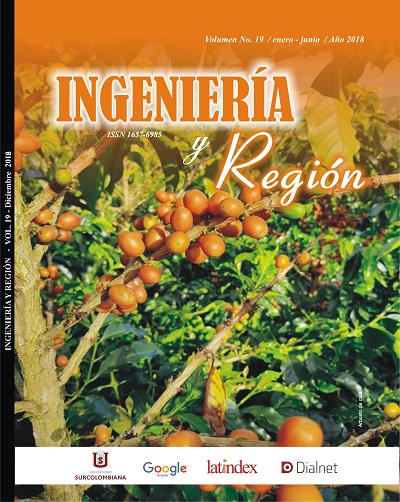Nuevos abonos a partir de excrementos de insecto: el caso del gusano de la harina (Tenebrio molitor)
##plugins.themes.bootstrap3.article.main##
El gusano de la harina (Tenebrio molitor) es un coleóptero que en la naturaleza representa una importante plaga de productos derivados de cereales. En su cría a nivel industrial con fines alimenticios se han logrado unas cualidades de sus excrementos que los revalorizan como abono de uso en agricultura, al presentar un balance nutricional y un contenido en materia orgánica superior a los abonos orgánicos actuales del mercado. Además, la presencia del polisacárido quitina en estos excrementos los revaloriza aún más para este nuevo uso, ya que es un compuesto con actividad antimicrobiana, capacidad de promoción del crecimiento vegetal, inductor de resistencias y favorecedor de las relaciones simbióticas. Por otro lado, la microbiota asociada a sus intestinos, y que seguramente acompañe sus deposiciones, puede contener importantes microrganismos beneficiosos para las plantas. Este trabajo se centra en una recopilación de todas las investigaciones realizadas hasta el momento sobre el novedoso uso de estos excrementos.
Descargas
##plugins.themes.bootstrap3.article.details##
Ab Aziz, Z. F., Saud, H. M., Kundat, F. R., Jiwan, M., & Wong, S. K. 2015. Rhizobacterium Bacillus cereus induces root formation of pepper (Piper nigrum L.) stem cuttings. Research in Biotechnology, 6(2).
Argueta-Reyes, L. & Ramos-Meléndez, G.K. 2013. Contenido de Proteína, Grasa, Calcio, Fósforo en larvas del escarabajo molinero (Coleoptera: Tenebrionidae: Tenebrio molitor L.) alimentadas con diferentes sustratos y fuentes de agua; para ser utilizadas como alimentación de animales silvestres. Tesis Doctoral. Universidad de El Salvador.
Baba, Z. A., Aziz, M. A., Sheikh, T. A., Sheikh, F. A., Bhat, Z. A., Khan, S., & Hamid, B. 2015. Studies on soil health and plant growth promoting potential of Rhizobium isolates. Emirates Journal of Food and Agriculture, 27(5), 423.
Barrientos, J.A. 2004. Curso práctico de entomología (Vol. 41). Univ. Autónoma de Barcelona.
Beshir, H. M., Walley, F. L., Bueckert, R., & Tar'an, B. 2015. Response of snap bean cultivars to Rhizobium inoculation under dryland agriculture in Ethiopia. Agronomy, 5(3), 291-308.
Bittelli. M., Flury, M., Campbell, G.S., Nichols, E.J. 2001. Reduction of transpiration through foliar application of chitosan. Agricultural and Forest Meteorology, 107: 167-175.
Chinery, M. 1997. Guía de campo de los insectos de España y de Europa. Editorial Omega.
Chinery, M. 2001. Guía de los insectos de Europa. Editorial Omega.
Daggy, T. 1946. Notes on the ecology and taxonomy of certain pupae of the family Tenebrionidae (Coleoptera). Proceedings of the Indiana Academy of Science, 56: 253-260.
Dierl, W. & Ring, W. 1995. Insectos de España y de Europa: identificación, hábitat, biología. Editorial Omega.
Dutta, J., Tripathi, S., Dutta, P.K. 2012. Progress in antimicrobial activities of chitin, chitosan and its oligosaccharides: a systematic study needs for food applications. Food Science and Technology International, 18: 3-34.
Dutta, P.K., Tripathi, S., Mehrotra, G.K., Dutta, J. 2009. Perspectives for chitosan based antimicrobial films in food applications. Food Chemistry, 114: 1173-1182.
Elsheikh, E. A. 2015. Response of legume-Rhizobium symbiosis to salinity in the Sudan: a review. Journal of Agricultural Science, 6(2), 142-156.
Enríquez-Guevara, E.A., Aispuro-Hernández, E., Vargas-Arispuro, I., Martínez-Téllez, M.Á. 2010. Oligosacarinas Derivadas de Pared Celular: Actividad Biológica y Participación en la Respuesta de Defensa de Plantas. Revista Mexicana de Fitopatología, 28:144-155.
Escaso, F., Narváez, I., Planelló, M.R., Rueda, M.J., Herrero, O. 2015. Manual de Entomología Aplicada. Sanz y Torres-UNED.
Ferguson, B. J. 2013. The development and regulation of soybean nodules. INTECH Open Access Publisher.
Fernández Rubio, F., Moreno Fernández-Caparrós, L., Soriano, Ó. 2014. Artrópodos en medicina y veterinaria. Ministerio de Defensa de España.
Fielding, D. J., Trainor, E., & Zhang, M. 2013. Diet influences rates of carbon and nitrogen mineralization from decomposing grasshopper frass and cadavers. Biology and Fertility of Soils, 49(5), 537-544.
Gao Y (2011). 黄粉虫粪营养成分的测定与分析 (Measurement and analysis Tenebrio faecal nutrients). 黑龙江畜牧兽医: 下半月, (3).
García-Serrano, P., Ruano, S., Marotta, J., & Nogales, M. 2010. Guía práctica de la fertilización racional de los cultivos en España. Parte I. Gobierno de España. Ministerio del Medio Ambiente y Medio Rural y Marino. España.
Goswami, D., Parmar, S., Vaghela, H., Dhandhukia, P., & Thakker, J. N. 2015. Describing Paenibacillus mucilaginosus strain N3 as an efficient plant growth promoting rhizobacteria (PGPR). Cogent Food & Agriculture, 1(1), 1000714.
Han, J. H., & Kim, J. O. 2015. D-6: Biological Control of Anthracnose (Colletotrichum acutatum and C. gloeosporioides) on Pepper by Use of Bacillus spp. 균학회소식, 27(1), 116-116.
Howard, R.S. (955. The biology of the grain beetle Tenebrio molitor with particular reference to its behavior. Ecology, 36: 262-269.
Juan, C. & Petitpierre, E. 1991. Evolution of genome size in darkling beetles (Tenebrionidae, Coleoptera). Genome, 34: 169-173.
Julca-Otiniano, A., Meneses-Florián, L., Blas-Sevillano, R., Bello-Amez, S. 2006. La materia orgánica, importancia y experiencia de su uso en la agricultura. Idesia, 24: 49-61.
Jung, J., Heo, A., Park, Y.W., Kim, Y.J., Koh, H., Park, W. 2014. Gut microbiota of Tenebrio molitor and their response to environmental change. J. Microbiol. Biotechnol, 24: 888-897.
Kagata, H., & Ohgushi, T. 2012. Positive and negative impacts of insect frass quality on soil nitrogen availability and plant growth. Population Ecology, 54(1), 75-82.
Kaku, H., Nishizawa, Y., Ishii-Minami, N., Akimoto-Tomiyama, C., Dohmae, N., Takio, K., Shibuya, N. 2006. Plant cells recognize chitin fragments for defense signaling through a plasma membrane receptor. Proceedings of the National Academy of Sciences, 103: 11086-11091.
Kaur, H., Kaur, H., & Rishi, P. 2015. Bare-root-dip treatment of tomato seedlings with neem and Bacillus thuringiensis for the management of Meloidogyne incognita. History, 3(10), 6-17.
Li, L., Xie, B., Dong, C., Wang, M., Liu, H. 2016. Can closed artificial ecosystem have an impact on insect microbial community? A case study of yellow mealworm (Tenebrio molitor L.). Ecological Engineering, 86: 183-189.
Li, L., Zhao, Z., Liu, H. 2013. Feasibility of feeding yellow mealworm (Tenebrio molitor L.) in bioregenerative life support systems as a source of animal protein for humans. Acta Astronautica, 92: 103-109.
Liu, H., Yang, Z., Tan, D., & Wu, Z. 2002. Study on the fertilizer efficiency of the frass of Tenebrio molitor L. Journal of Quanzhou Normal College (Natural Science), 21(4), 68-71.
Luo, H. Y., Wang, H., & Wang, Q. 2011. Effects of Different Application Amount of Yellow Mealworm Excrement on Growth and Quality of Rape. Shandong Agricultural Sciences, 8, 026.
Mármol, Z., Páez, G., Rincón, M., Araujo, K., Aiello, C., Chandler, C., & Gutiérrez, E. 2013. Quitina y Quitosano polímeros amigables. Una revisión de sus aplicaciones/Chitin and Chitosan friendly polymer. A review of their applications. Revista Tecnocientífica URU, (1), 53-58.
Medvedev, G.S. & Iwan, D. 2006. Notes on the taxonomy of tenebrionid beetles (Coleoptera: Tenebrionidae). Annales Zoologici, 56: 613-621.
Mishra, A., Afik, O., Cabrera, M. L., Delaplane, K. S., & Mowrer, J. E. 2013. Inorganic nitrogen derived from foraging honey bees could have adaptive benefits for the plants they visit. PloS one, 8(7), e70591.
Mishra, P. K., Bisht, S. C., Mishra, S., Selvakumar, G., Bisht, J. K., & Gupta, H. S. 2012. Coinoculation of Rhizobium leguminosarum-PR1 with a cold tolerant Pseudomonas sp. improves iron acquisition, nutrient uptake and growth of field pea (Pisum sativum L.). Journal of plant nutrition, 35(2), 243-256.
Moreira, N.R. 2013. Fisiologia molecular intestinal de Tenebrio molitor. Doctoral dissertation, Universidade de São Paulo.
Moreno, A.A. & Alvarez, C.S. 2005. Entomología agraria: los parásitos animales de las plantas cultivadas. Diputación Provincial de Soria.
Park, J.B., Kim, S.H., Han, Y.S., Kim, N.J. 2014. Developmental characteristics of Tenebrio molitor larvae (Coleoptera: Tenebrionidae) in different instars. International Journal of Industrial Entomology, 28: 5-9.
Peng, G., Pageau, D., Strelkov, S. E., Lahlali, R., Hwang, S. F., Hynes, R. K., & Falk, C. K. 2013. Assessment of crop rotation, cultivar resistance and Bacillus subtilis biofungicide for control of clubroot on canola. Acta Hort, 1005, 591-598.
Poveda, J. 2015. Mealfrass: Utilización de excrementos del gusano de la harina (Tenebrio molitor) como abono orgánico con capacidad bioestimulante. XXXI Encuentro de Jóvenes Investigadores. Instituto de Investigaciones Científicas y Ecológicas.
Poveda, J. 2017. Mealfrass III: Utilización de excrementos del gusano de la harina (Tenebrio molitor) como abono orgánico con capacidad biopesticida. XXXIII Encuentro de Jóvenes Investigadores. Instituto de Investigaciones Científicas y Ecológicas.
Prashanth, K.H. & Tharanathan, R.N. 2007. Chitin/chitosan: modifications and their unlimited application potential - an overview. Trends in Food Science & Technology, 18: 117-131.
Ramírez, M.A., Rodríguez, A.T., Alfonso, L., Peniche, C. 2010. Chitin and its derivatives as biopolymers with potential agricultural applications. Biotecnología Aplicada, 27: 270-276.
Ramsay, J.A. 1964. The rectal complex of the mealworm Tenebrio molitor, L. (Coleoptera, Tenebrionidae). Philosophical Transactions of the Royal Society of London B: Biological Sciences, 248: 279-314.
Rasaei, B., Ghobadi, M. E., Ghobadi, M., & Najaphy, A. 2013. Reducing effects of drought stress by application of humic acid, mycorrhiza and Rhizobium on chickpea. International Journal of Agriculture and Crop Sciences, 5(16), 1775.
Rinaudo M (2006). Chitin and chitosan: properties and applications. Progress in Polymer Science, 31: 603-632.
Romeh, A. A., & Hendawi, M. Y. 2014. Bioremediation of certain organophosphorus pesticides by two biofertilizers, Paenibacillus (Bacillus) polymyxa (Prazmowski) and Azospirillum lipoferum (Beijerinck). Journal of Agricultural Science and Technology, 16(2), 265-276.
Seo, D. J., Lee, Y. S., Kim, K. Y., & Jung, W. J. 2016. Antifungal activity of chitinase obtained from Paenibacillus ehimensis MA2012 against conidial of Collectotrichum gloeosporioides in vitro. Microbial Pathogenesis, 96, 10-14.
Sharp, R.G. 2013. A review of the applications of chitin and its derivatives in agriculture to modify plant-microbial interactions and improve crop yields. Agronomy, 3: 757-793.
Shepard, R. B., & Minshall, G. W. 1981. Nutritional value of lotic insect feces compared with allochthonous materials. Archiv fur Hydrobiologie.
Silva, V. N. D., Silva, L. E., da Silva, A. J., & Macedo, G. R. D. 2015. Biofertilizers and performance of Paenibacillus in the absorption of macronutrients by cowpea bean and soil fertility. Revista Brasileira de Engenharia Agrícola e Ambiental, 19(12), 1136-1142.
Singh, A. D. R. K., Kumar, S., & Kumar, S. 2015. An effective and beneficial plant growth promoting soil bacterium “Rhizobium”: a review. Annals of Plant Sciences, 4(01), 933-942.
Spang, B. 2013. Insects as food: Assessing the food conversion efficiency of the mealworm (Tenebrio molitor). Doctoral dissertation, The Evergreen State College.
Stoops, J., Crauwels, S., Waud, M., Claes, J., Lievens, B., Van Campenhout, L. 2016. Microbial community assessment of mealworm larvae (Tenebrio molitor) and grasshoppers (Locusta migratoria migratorioides) sold for human consumption. Food Microbiology, 53: 122-127.
Triplehorn, C.A.J., Borror, N.F., Triplehorn, D.J.C.A., Johnson, N.F. 2005. Introduction to the study of insects. Thomson-Brooks.
Velásquez, C.L. 2008. Algunas potencialidades de la quitina y el quitosano para usos relacionados con la agricultura en Latinoamérica. Revista UDO Agrícola, 8: 1-22.
Waewthongrak, W., Pisuchpen, S., & Leelasuphakul, W. 2015. Effect of Bacillus subtilis and chitosan applications on green mold (Penicilium digitatum Sacc.) decay in citrus fruit. Postharvest Biology and Technology, 99, 44-49.
Wang, Y. & Zhang, Y. 2015. Investigation of Gut-Associated Bacteria in Tenebrio molitor (Coleoptera: Tenebrionidae) Larvae Using Culture-Dependent and DGGE Methods. Annals of the Entomological Society of America, 108: 941-949.
Widnyana, I. K., & Javandira, C. 2016. Activities Pseudomonas spp. and Bacillus sp. to Stimulate Germination and Seedling Growth of Tomato Plants. Agriculture and Agricultural Science Procedia, 9, 419-423.
Xie, J., Shi, H., Du, Z., Wang, T., Liu, X., & Chen, S. 2016. Comparative genomic and functional analysis reveal conservation of plant growth promoting traits in Paenibacillus polymyxa and its closely related species. Scientific Reports, 6.
Younes, I., & Rinaudo, M. 2015. Chitin and chitosan preparation from marine sources. Structure, properties and applications. Marine drugs, 13(3), 1133-1174.
Zhang, M.I., Tan, T., Yuan, H., Rui, C. 2003. Insecticidal and fungicidal activities of chitosan and oligo-chitosan. Journal of Bioactive and Compatible Polymers, 18: 391-400.
Zhang, A. M., Zhao, G. Y., Gao, T. G., Wang, W., Li, J., Zhang, S. F., & Zhu, B. C. 2013. Solubilization of insoluble potassium and phosphate by Paenibacillus kribensis CX-7: A soil microorganism with biological control potential. African Journal of Microbiology Research, 7(1), 41-47.
Zhao, Y., Selvaraj, J. N., Xing, F., Zhou, L., Wang, Y., Song, H., & Liu, Y. 2014. Antagonistic action of Bacillus subtilis strain SG6 on Fusarium graminearum. PLoS One, 9(3), e92486.


















